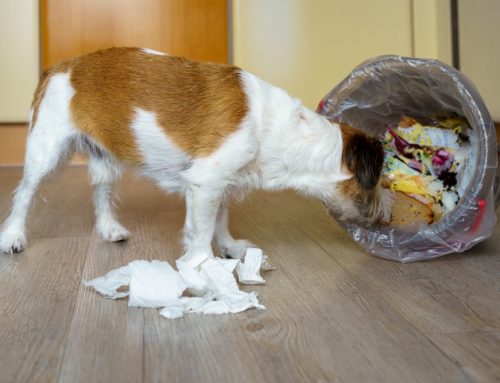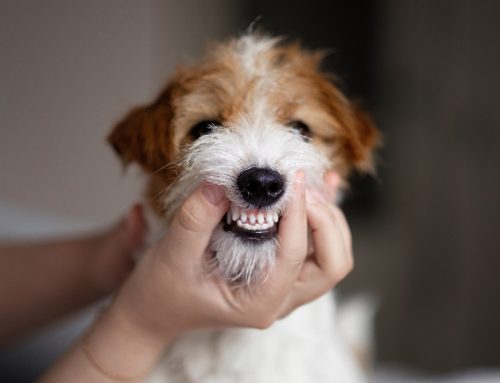Canine parvovirus (CPV), commonly called parvo, is a highly contagious and potentially deadly disease that primarily affects puppies and unvaccinated dogs. Parvo in dogs can cause severe vomiting, diarrhea, and dehydration. Understanding the causes, recognizing the signs, and knowing the preventive measures are crucial for protecting your dog from this serious illness. Our Stanton Pet Hospital team explores canine parvovirus and how you can protect your four-legged friend.
What is canine parvovirus?
Canine parvovirus is a disease that primarily affects dogs’ gastrointestinal tracts, leading to serious digestive tract issues and dehydration. It is a member of the Parvoviridae family and the genus Protoparvovirus. The virus attacks the cells within the intestinal tract and can also affect the heart in young puppies, causing myocarditis. The virus is known for its resilience and can survive in the environment for extended periods.
What causes parvo in dogs?
Canine parvovirus can be spread in several ways, including:
- Fecal-oral route — The most common method of transmission is through contact with infected feces. The virus is shed in large quantities in the feces of infected dogs and can contaminate the environment, including soil, surfaces, and objects.
- Contaminated surfaces — The virus can survive on kennels, food and water bowls, leashes, collars, and even human clothing and hands. Dogs can become infected by coming into contact with these contaminated objects.
- Direct dog-to-dog contact — Although less common, direct contact between dogs can also spread the virus, especially if an uninfected dog comes into contact with an infected dog’s vomit or saliva.
- Environment — Parvovirus is resilient and can survive in the environment for extended periods, particularly in cool and damp conditions. Its resiliency makes it challenging to eradicate once an area is contaminated.
- Infected dogs — Infected dogs can spread the virus for several days, even after recovery, as they continue to shed it in their feces.
Preventing the spread of parvovirus involves proper vaccination, good hygiene, and isolation of infected dogs.
Canine parvovirus signs
Dogs typically show signs of parvo within five to eight days of coming into contact with the virus. Common signs include:
- Gastrointestinal effects — The hallmark signs of parvo include severe vomiting and diarrhea, which may be bloody, leading to rapid dehydration.
- Lethargy — Infected dogs often are extremely lethargic and uninterested in food..
- Fever — Dogs may develop a fever, although some may have a sub-normal body temperature.
- Abdominal pain — Dogs may have mild to severe abdominal pain and discomfort.
- Shock and sepsis — In severe cases, dogs may go into shock or develop sepsis, a life-threatening condition in which the infection spreads throughout the body.
Diagnosis and treatment of canine parvovirus
Our Stanton Pet Hospital team diagnoses parvo through a combination of clinical signs and laboratory tests, including a fecal ELISA test that detects the presence of the virus.
To treat parvovirus, our team uses a new treatment option called Canine Parvovirus Monoclonal Antibody (CPMA) for cases in dogs 8 weeks of age and older. This antibody has been highly effective in reducing parvo-related deaths. Supportive care is also a mainstay of treatment and includes intravenous fluids, anti-nausea medications, antibiotics to prevent secondary infections, and nutritional support. Early intervention is critical for the best chance of recovery.
Canine parvovirus prevention

Considering the severity of parvo in dogs, prevention is key to maintaining your furry friend’s health. Follow these steps to help prevent your dog from being infected:
- Vaccination — The most effective way to prevent parvo is through vaccination. Puppies should receive a series of vaccinations starting at 6 to 8 weeks of age, followed by boosters. Adult dogs should receive regular boosters as recommended by our veterinarian.
- Sanitation — Disinfect surfaces with a solution of bleach and water (1:32 dilution) to kill the virus.
- Isolation — Infected dogs should be isolated from healthy dogs to prevent the spread of the virus.
- Limiting exposure — Avoid taking puppies and unvaccinated dogs to high-risk areas, such as dog parks and boarding facilities, until fully vaccinated.
Parvo in dogs is a severe and sometimes life-threatening disease, but it is largely preventable through vaccination and good hygiene practices. By being aware of the causes and signs of parvo, you can take proactive steps to protect your furry friend and ensure their well-being. If you suspect your dog may have contracted parvo, contact our Stanton Pet Hospital team immediately, as early treatment is crucial for recovery.






Leave A Comment